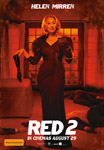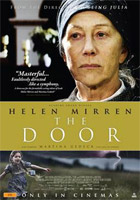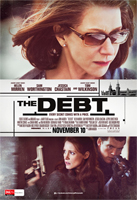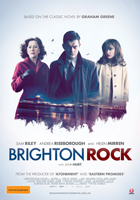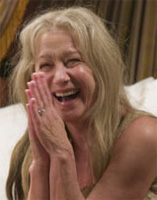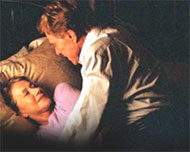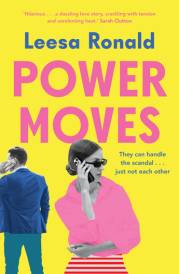Helen Mirren Eye in the Sky
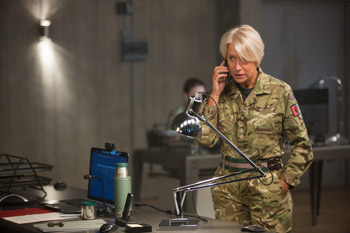
Helen Mirren Eye in the Sky
Cast: Helen Mirren, Alan Rickman, Aaron Paul, Barkhad Abdi
Director: Gavin Hood
Genre: Drama, Thriller
Running Time: 102 minutes
Synopsis: After tracking a British citizen-turned-terrorist for six years, Colonel Katherine Powell (Academy Award winner Helen Mirren) finally corners her target in Kenya with the help of high-tech American drone surveillance. As Special Forces troops close in, the discovery of plans for a pair of imminent suicide bombings turns an intended capture into a mission to kill. But just as the Las Vegas-based drone pilot (Emmy Award winner Aaron Paul) prepares to launch a powerful Hellfire missile at the safe house, a nine-year-old girl is spotted in the kill zone, sparking an international debate at the highest levels of government about whether saving one child's life is worth the almost certain death of hundreds of others. Meanwhile, a local operative (Academy Award nominee Barkhad Abdi) risks everything to try and get the girl to safety.
Taking place in near real-time across four continents, EYE IN THE SKY is a white-knuckle thriller that tackles the moral ambiguities of modern-day warfare head on. With a top-flight ensemble cast that also includes Alan Rickman, Jeremy Northam, Iain Glen and Phoebe Fox, the film deftly explores a political, legal and moral minefield in which every decision comes at a steep price.
Eye in the Sky
Release Date: March 24th, 2016
About The Production
Following on from his 2007 film Rendition, director Gavin Hood returns to the realm of contemporary warfare with the tense thriller Eye In The Sky, which explores both the practical application and the ethical ramifications of drone warfare.
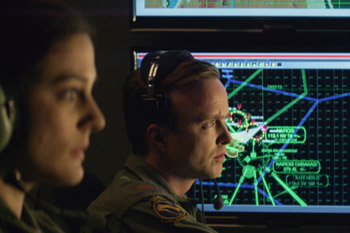 'I was aware of all the different aspects of drone warfare," begins Gavin Hood, 'because I'd made a film about American military adventures with Rendition. I'd read articles, I'd read opinions and I'd read books. I had always tried to keep up-to-date with what was happening in the American military but I hadn't taken a deep dive into this very specific question of targeted assassination."
'I was aware of all the different aspects of drone warfare," begins Gavin Hood, 'because I'd made a film about American military adventures with Rendition. I'd read articles, I'd read opinions and I'd read books. I had always tried to keep up-to-date with what was happening in the American military but I hadn't taken a deep dive into this very specific question of targeted assassination."
The opportunity to explore this highly contentious aspect of modern warfare came when Hood read the Eye In The Sky script from screenwriter Guy Hibbert, who has written the films Five Minutes of Heaven (2009), Omagh (2004) and Shot Through the Heart (1998), as well as contributing to a number of highly acclaimed British television series.
'I knew drones and computerised warfare were going to become more and more prevalent in the 21st century," explains Guy Hibbert, 'and I thought, -Well, no one is writing about this, so let's have a look at it.'"
Guy Hibbert visited an arms-fair in Paris 'and drones were just everywhere," he says. 'Every arms manufacturer had brought out a new bit of kit. Then I started talking to the military and they said that there had never been a public debate about this form of warfare. What troubled them was that in traditional warfare, the commander is on the ground and he makes a decision in the moment. That is not true with drone warfare and so exploring that idea seemed a good starting point for a movie."
The script was developed with producers Colin Firth and Ged Doherty. 'I loved the ideas in Guy Hibbert's script," Ged Doherty explains, 'and eventually we got it in front of Gavin Hood, who is a tremendous director."
Gavin Hood's interest was sparked by the questions that the script posed: 'Here was a piece by a very talented writer that generated something which could spark a conversation among the general public and the general media," the director says. 'It created a situation that didn't provide an easy answer."
The situation unfolds in Nairobi, Kenya. American and British military chiefs are afforded the opportunity to remotely assassinate a key terrorist target, Susan Danford (Lex King), also known as Ayesha al-Hady, an English convert and high-value al-Shabab terror suspect. The narrative then focuses on the men and women on the ground that are charged with tracking the terrorist subject, as well as personnel in Kenya, the UK and the US, including high-ranking military and political figures, along with the drone pilot and his team. Together, these figures form the -kill chain', an attack structure that co-ordinates target identification and the specific force dispatched to remove the target. It also incorporates all those discussing and giving the orders to attack the target, and those finally responsible for implementing the destruction of the target itself.
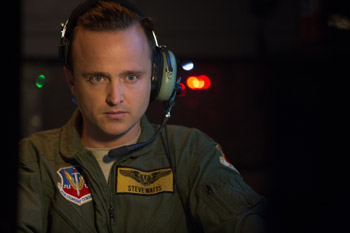 'Kill Chain was my original title for the film," notes Guy Hibbert. 'Through centuries of warfare, the general in the field has always been in command of the decision whether to shoot or not to shoot. With computerized warfare, images are now sent to everybody's desktop all over the world, and all these different people want input."
'Kill Chain was my original title for the film," notes Guy Hibbert. 'Through centuries of warfare, the general in the field has always been in command of the decision whether to shoot or not to shoot. With computerized warfare, images are now sent to everybody's desktop all over the world, and all these different people want input."
'The military call this the kill chain and that poses important questions. Who has the power to make that decision, to press that button? Is it the politicians, or the general in London, or the general in the US, or the commander in Kenya? The people about to be killed in our story include a Kenyan, two Brits and an American, so who makes the decision?" The decision to destroy the targets is further complicated by the problem of collateral damage, which again has to be measured from afar.
'Guy Hibbert's script created a very complex scenario," continues filmmaker Gavin Hood, a South African filmmaker who counts the likes of Ender's Game (2013), X-Men Origins: Wolverine (2009) and Tsotsi (2005) among his directing credits. 'The script is informative in the way that it sets up the landscape, the chain of command and the way modern drone warfare is used."
'We see how profoundly human emotions are tested in a difficult scenario. Then, with the audience being made aware of the process, we can begin to debate the merits of using this technology."
The question remains: when to use a weapon of war? And what are the consequences of using that weapon? The weapon may be effective at taking out a target but what are the unintended consequences of using the weapon?
As Gavin Hood identifies, when a Hellfire missile is fired from a high-flying drone, it's not as precise as a sniper's bullet. 'They give rise to very large explosions, throwing lots of debris around," the director explains. 'Inevitably, when you see that explosion in the film it becomes very difficult to argue that no collateral damage could occur. On the contrary, you see that it very easily can occur. In using this weapon, however careful you are, it can result in collateral damage and we must ask what is the effect of that collateral damage on the local population and on their feelings towards the western world?"
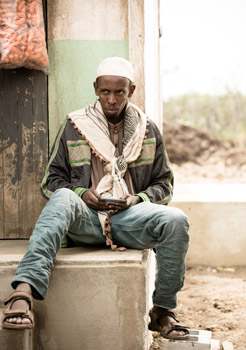 'I think what Guy Hibbert's script does so brilliantly is to invite this genuine conversation," he adds.
'I think what Guy Hibbert's script does so brilliantly is to invite this genuine conversation," he adds.
'It is not simplistic. The dilemmas faced by the characters in the film are real and not easily solved. Their responses to these dilemmas are profoundly human and I hope that the audience can find something in the film to connect to, whether it is the emotional response of the drone pilot or the response of the commander in Kenya, or those in London or the US."
The collateral damage caused by a drone strike extends beyond potential human casualties.
The killing of civilians, even accidentally, has a profound impact on the propaganda war. 'That is a very important conversation," says Gavin Hood. 'Are drone strikes, which inevitably do result in civilian casualties, actually generating so much anti-Western sentiment that whatever success they may have in taking out a high-value individual, is offset by a growing animosity towards the West? That's a propaganda question. In war, propaganda is an extremely important tool. Are we creating negative propaganda towards the West through the use of drones?"
'I think the film asks whether we really are winning when using this form of warfare. Are we really winning when using these drones? When should we use this technology? What are the consequences of using this technology? Come and see this movie and you can decide for yourself."
For the filmmakers, it was vital that the narrative posed these difficult questions while asking the audience to decide on the answers. 'What you don't want to do as a director is preach to your audience," says Gavin Hood. 'You want to create a sense of pace, a sense of tension, a thriller, while at the same time, raising difficult, philosophical questions in the mind of the audience. In order to do that you have to keep the story moving forward so as to keep the tension alive, while at the same time finding moments where the story breathes, which allows the audience to catch up. You need to give the audience time to process the arguments."
'And then, just when the audience thinks they have sided with one particular argument, you throw in another argument that turns it on its head and has the viewer asking, -Wait a minute, do I really think what I just thought a minute ago? No, maybe I don't.' And just when they're agreeing with someone else, here comes another point of view."
The Kill Chain: Characters And Cast
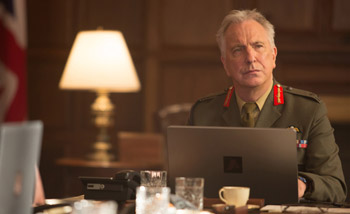 In order to stimulate and maintain this debate for the audience, Hood required performances from his cast that were absolutely truthful. 'What I was looking for from each actor was an honest emotional and intellectual response, given the situation in which their particular character finds themselves," he says.
In order to stimulate and maintain this debate for the audience, Hood required performances from his cast that were absolutely truthful. 'What I was looking for from each actor was an honest emotional and intellectual response, given the situation in which their particular character finds themselves," he says.
'No one character has complete knowledge of the situation they're watching on their screens, and every character, like every human being, sees the world from the perspective in which they find themselves. It was important that each character occupied their particular space with sincerity."
Gavin Hood didn't want any -stock' characters in the movie. 'Sometimes, when actors play a character that is controversial or takes a position that is morally questionable," he says, 'the actor will almost want to suggest that they themselves don't believe it. We couldn't have that."
Hence, the casting decisions were absolutely crucial. Arguably the most hawkish character in the film, the person with the greatest desire to take out the target is Colonel Katherine Powell, brought to life on screen by Oscar-winner Dame Helen Mirren. 'Originally, the Helen Mirren character was a man but then we said, -Why don't we make this character a woman?'," explains producer Ged Doherty. 'And that completely changed the complexity of the piece."
'The idea of having Helen Mirren was so brilliant because, on the one hand, you might think, -Well, a woman would think twice perhaps before she pulled the trigger.' Equally, you know it is Helen Mirren and you know that she can play a badass. You're never quite sure which way she'll go. Helen Mirren gives the character that perfect balance and we went to her with the role straightaway."
Gavin Hood adds, 'What is so brilliant about an actress like Helen Mirren is that even as she's making decisions that may be morally questionable, you completely believe that she is sincere in taking that position " given the role that she has as a Colonel in the British military. So we empathise with her even in moments that we may not agree with her, and similarly with Aaron Paul's character."
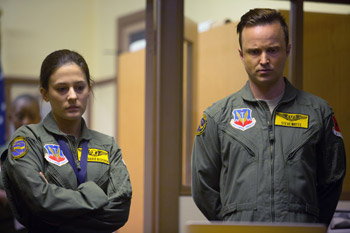 Breaking Bad star Aaron Paul features as pilot Steve Watts, who operates the drone from a United States Air Force base deep in the Nevada desert. Like all the characters in the film, he acts within the parameters of his training, and what he can see on his computer screen. 'Aaron Paul stands up to Colonel Powell," explains Gavin Hood, 'but the key is for him to do it in a way that comes from a real place. He is the person who actually has to pull the trigger. Other people may be making decisions to fire the missile, but ultimately, Steve Watts fires the weapon. And to imagine what that must feel like, you need an actor who invites you into his dilemma and doesn't judge the character that he's playing. What I'm very proud of from all the actors is that no one in the film comes across as some sort of stereotype."
Breaking Bad star Aaron Paul features as pilot Steve Watts, who operates the drone from a United States Air Force base deep in the Nevada desert. Like all the characters in the film, he acts within the parameters of his training, and what he can see on his computer screen. 'Aaron Paul stands up to Colonel Powell," explains Gavin Hood, 'but the key is for him to do it in a way that comes from a real place. He is the person who actually has to pull the trigger. Other people may be making decisions to fire the missile, but ultimately, Steve Watts fires the weapon. And to imagine what that must feel like, you need an actor who invites you into his dilemma and doesn't judge the character that he's playing. What I'm very proud of from all the actors is that no one in the film comes across as some sort of stereotype."
'I hope it's the case that you like Helen and you like Aaron Paul even though they're coming at it from completely different positions," he adds. 'You may not agree with them over certain points, but you can see that they're real people wrestling with a real dilemma in a real way." There are many more people in the kill chain beyond Powell and Watts, ranging from the people on the ground in Kenya to those watching screens all across the world. Among this clutch of characters are British Foreign Secretary James Willett (Iain Glen), British Lieutenant-General Frank Benson (Alan Rickman) and the key man on the ground, Jama Farah (Barkhad Abdi).
A lot of the casting ideas, notes producer Ged Doherty, came from his business partner, British screen legend Colin Firth. 'It was Colin Firth who suggested Alan Rickman and Colin Firth who suggested Aaron Paul," Ged Doherty says. 'Barkhad Abdi was my suggestion because I loved him in Captain Phillips. We have been so blessed with the cast we have been able to put together."
'Aaron Paul was brilliant in many ways," the producer continues. 'He is one of the nicest people you will ever meet and on set he created such a wonderful atmosphere with the crew and other members of the cast. Actually, he and Helen were so good that we cut out a lot of their back-story because we realised that as you watched the movie the characters revealed themselves through their actions. The viewer didn't need us to set them up."
'You understand the fact that Aaron Paul's character is a nice guy and this is the first time he is pulling the trigger and that he has morals. In my opinion, when you watch what he goes through in this movie, his story is in many ways the emotional heart of the film."
Also playing a key role is English stage and screen icon Alan Rickman whose character, as well as playing a key role in the kill chain, also brings a little levity to the story. We meet Lieutenant-General Frank Benson in a toyshop where, as a fish out of water, he struggles with the purchase of a child's doll.
'It is funny watching him worrying about buying a doll," says Ged Doherty, 'but having that in the story shows how a military man has to switch between two such extreme modes of living."
The director agrees. Brief moments of levity are vital to the story, says Gavin Hood. 'Just as in life, there are moments where tension is released through humour and laughter," he says.
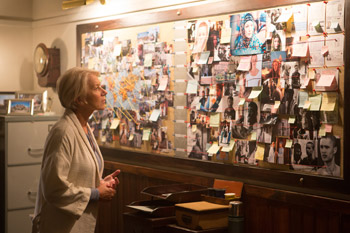 'Sometimes laughter comes out of frustration and the ridiculousness of the situation." He points to the ludicrousness of the kill chain, which, at times, leaves its participants paralysed. 'These folks sometimes find themselves in an almost farcical position. And often, as soon as you laugh, you realise the dilemma that these folk are facing. The film teases the audience in ways that are very true to life. One moment we're feeling tremendous irritation and frustration at the situation and the next moment we have to laugh at it. And that is a tricky thing to do in a film like this."
'Sometimes laughter comes out of frustration and the ridiculousness of the situation." He points to the ludicrousness of the kill chain, which, at times, leaves its participants paralysed. 'These folks sometimes find themselves in an almost farcical position. And often, as soon as you laugh, you realise the dilemma that these folk are facing. The film teases the audience in ways that are very true to life. One moment we're feeling tremendous irritation and frustration at the situation and the next moment we have to laugh at it. And that is a tricky thing to do in a film like this."
If the film is endlessly dark, then it's almost too much to handle. 'If it is broken up by humour in the right amounts then that humour provides a much-needed release from the tension," Gavin Hood says. 'If, on the other hand, you insert humour in an inappropriate way, then you will only irritate your audience. So again, these are conversations that I had with the actors: how to find moments of humour so that we don't over indulge but which are still true to life." Moments of levity also emerge on the ground as Jama Farah forms a relationship with a young boy, while at the same time spying on the target for the British and American military. Somalia-born actor Barkhad Abdi, who came to international attention playing a modern-day pirate in Captain Phillips, brings Farah to life on screen.
'I thought Barkhad Abdi's performance in Captain Phillips was one of the most compelling I'd seen in the last four or five years, from a brand new actor that no one knew anything about," says Ged Doherty. 'I remembered that he was the bad guy in Captain Phillips but we still had sympathy for him because of the situation he was in. At the same time I was scared of him. I just thought it would be brilliant to cast him as a hero this time, a good guy and, again, for me he brought that same intensity as he did with Captain Phillips. He was wonderful to work with."
Another very important character is the Somali child called Alia, who during the course of the film emerges as a potential causality when the kill chain assesses the collateral damage from its drone strike. Her role in the story becomes pivotal.
Indeed, for writer Guy Hibbert, the life of an innocent African child caught up in a global conflict, was reason enough to write the screenplay. 'It's difficult to make films where victims are key characters, since they are victims of somebody else's energy," he says. 'It was a real challenge. But I was looking at warfare and thinking that victims in the world often don't get a proper place in storytelling. Alia was my way of working out how to make the victim the driving force in the story."
Shooting Eye In The Sky: Authenticity, Locations and Cinematography
The plot for Eye In The Sky could have unfolded at no other time but now, according to Chris Lincoln-Jones, the film's UK military advisor. Jones spent 25 years in the army as a Royal Artillery Officer, before leaving in 2000 to work in the defence industry. 'The plot sits very well with what is happening in the world today," he says.
Hibbert approached Jones because the latter's knowledge of unmanned air vehicles, which meant he could give vital insight into this new fighting technology. Jones's primary task was to give authenticity to the Permanent Joint Headquarters, the British tri-service HQ in London from where all overseas military operations are planned and controlled. This is where Colonel Powell is planning her complex military operation in a faraway, al-Shabab controlled zone of Nairobi.
Jones brought an understanding of military law, uniforms and language. He also provided background information on the characters that would inform the actors bringing them to life. Colonel Powell, he thought, might have joined the army during the Falklands conflict. With her sharp intelligence, she would have climbed the ranks. But Eye In The Sky represents a moment when she would be, 'seeing out her career and finding a last chance to take out a woman [Susan Danford] whom she has been hunting for the last six years."
The film's American military advisor, Chris Hercules, meanwhile, has practical experience of piloting drones. 'A day in the life of a drone pilot is always unique," he says. 'You never know that morning where in the world you will be flying. You will be based in Nevada or Texas but you will be flying in any number of locations around the world. We can support a number of different groups around the world and we will do this two or three times a day." 'I was so excited to work on this film," he adds. 'It is an important topic and the narrative is very well executed. It shows that warfare is horrible, but that we all do our best – from aviators to officers to enlisted people – to do the right thing."
With regard to locations, the entire film was shot in or around Cape Town, South Africa, apart from the Nevada Desert Air Force base, which was filmed around five hours north of the city in the Karoo desert. 'The rest of the film was shot in or around Cape Town Film Studios," explains Ged Doherty.
'The Nairobi scenes were all shot on the back lot at the studios. They are the equivalent of Pinewood in the UK and the set that you see for Nairobi was originally the set for The Long Walk To Freedom that we adapted thanks to our production designer, Johnny Breedt, who also worked on that film. We took his Soweto set from that film and converted it into our modern-day Nairobi."
Interestingly, every static set in the film is linked by the fact that it features a screen that allows the kill chain to survey its target and to direct its drone strike. 'There literally isn't a scene or a moment where there aren't screens that have part of the narrative carried to and from these different locations," says visual effects supervisor Simon Hansen.
'If ever there was a -screens' movie, this is it," says motion graphic supervisor Paul Kalil. 'Pretty much every static set has a screen in it, or multiple screens. There's lots of exposition that happens through screens. They're almost a character in themselves. 'We are trying to achieve a level of realism, so we try not to make anything up," adds Kalil. 'Our American military advisor, Chris Hercules, gave us extensive information about what type of screens they would have and what each of the screens would do. In Ground Control alone, there are 16 screens."
This meant that the actors were reacting to screens, rather than to each other. In fact, the main actors – Helen Mirren, Aaron Paul and Alan Rickman – were not on set together during filming. 'Not only were the actors not present to talk to each other, but also the visuals that the actors are looking at on screens were not complete, as they were to be done in post-production," says Hood. 'The cast had to react in a truthful way to an image on a screen that just wasn't there."
To help the actors bring their craft and imagination to the story, Hood showed them visual references that were similar to what they would be seeing. He also discussed each scene and its rhythm in detail with every actor.
When it came to physically shooting the film, however, the director faced another challenge. There is plenty of tense, on-the-ground action but, equally, much of the film focuses on key figures locked in rooms discussing their options.
'The great fear that I had with this film was that it might be a lot of talking heads in different rooms," Hood concedes. 'That could seem very static and almost like a TV movie. So the challenge from a directing point of view was to bring energy, pace and rhythm to a film where a lot of people are in these separate rooms."
'You bring energy to a scene in a number of ways and one of them is the way you block the scene," he adds, 'which allows the actors' movements. I asked for 45 days to shoot the movie as opposed to 30 so that my production designer, Johnny Breedt, could build sets that allowed the actors to get up and move, so that we feel their tension."
'Throughout the film, the staging allows a certain energy to be brought to each scene where the actors can actually move, which you would do in real life. The room where Alan Rickman's character and the politicians sit had to be quite big " otherwise the table dominates it."
'If you look at Barack Obama's actual Situation Room, for example, it's very cramped," he continues. 'If you look at the room that we created for the movie, it is quite large and allows the actors to pace around, particularly the minister, who's really stressed. The set allows him to get up, walk away, pour a glass of water, walk back to the table. At the same time, the characters are quite small in this big space."
The windows down the side of this particular room were slatted, so that the filmmakers could change the mood throughout the day rather than having the characters sitting in a one-tone, neon-lit room.
'A lot of these rooms are actually neon-lit in real life," says Gavin Hood, 'but by having these windows down one side of the room, you allow a cross-light to unfold, which is better for mood lighting on an actor. And, as the day progresses, we slowly move around and you feel there's a change in mood."
The set that houses the drone pilot was also interesting, says Hood. 'In real life, that guy's just in a pod. He's in a container out in the desert. But for the movie, that whole set was designed so that every wall could be removed to get a camera further back, allowing us to lengthen the lens and compress the intensity of the shot of the actor's face rather than being stuck with wide lenses in a very small space."
'We built a lot of these sets in order to enhance the visual interest and we lit very carefully to enhance the mood in each scene. I think, and certainly hope, that it all adds to the movie."
Eye in the Sky
Release Date: March 24th, 2016
Have You Seen This?
MORE
- Mission: Impossible Fallout
- Glenn Close The Wife
- Allison Chhorn Stanley's Mouth Interview
- Benicio Del Toro Sicario: Day of the Soldado
- Dame Judi Dench Tea With The Dames
- Sandra Bullock Ocean's 8
- Chris Pratt Jurassic World: Fallen Kingdom
- Claudia Sangiorgi Dalimore and Michelle Grace...
- Rachel McAdams Disobedience Interview
- Sebastián Lelio and Alessandro Nivola...
- Perri Cummings Trench Interview


